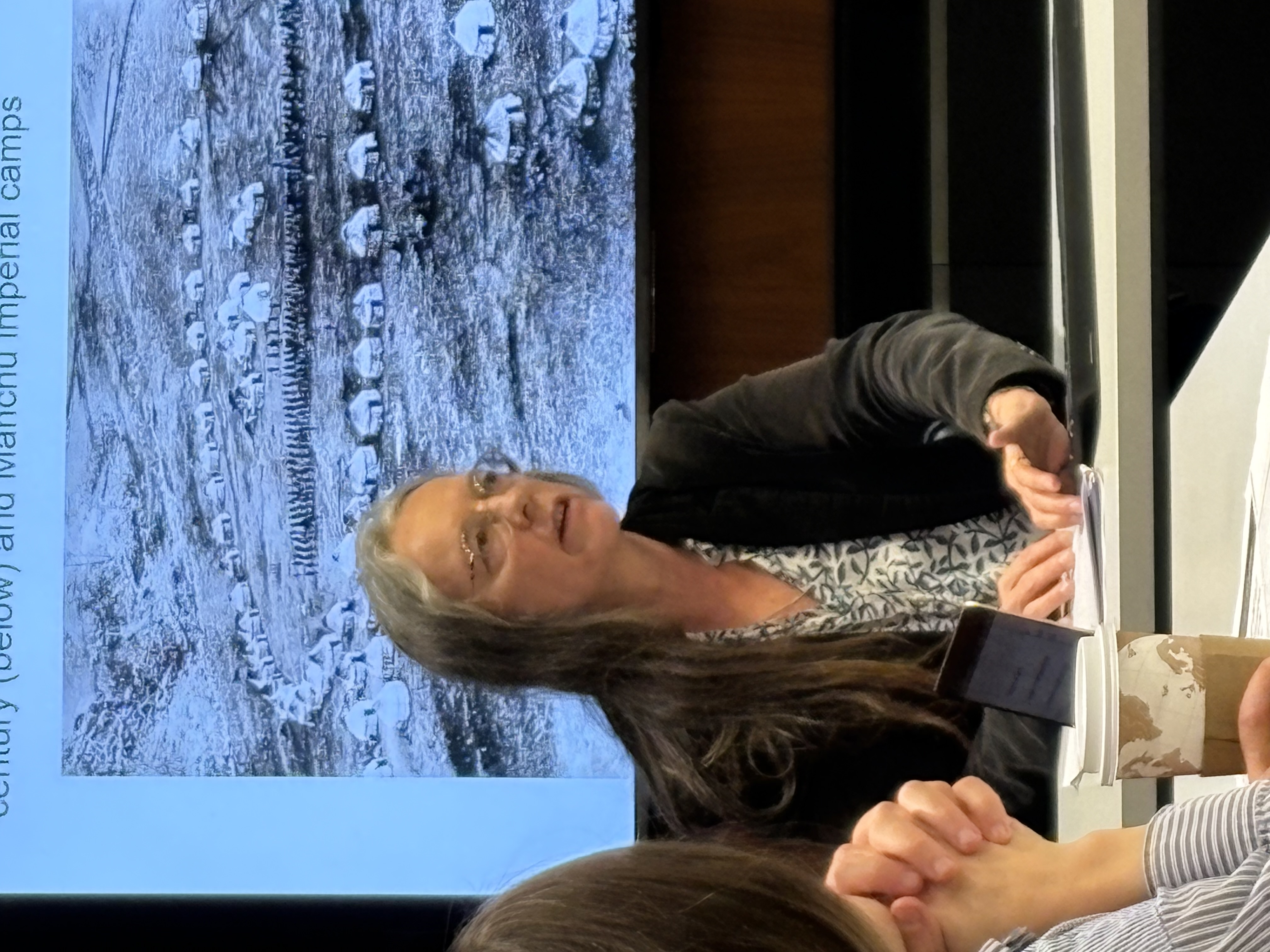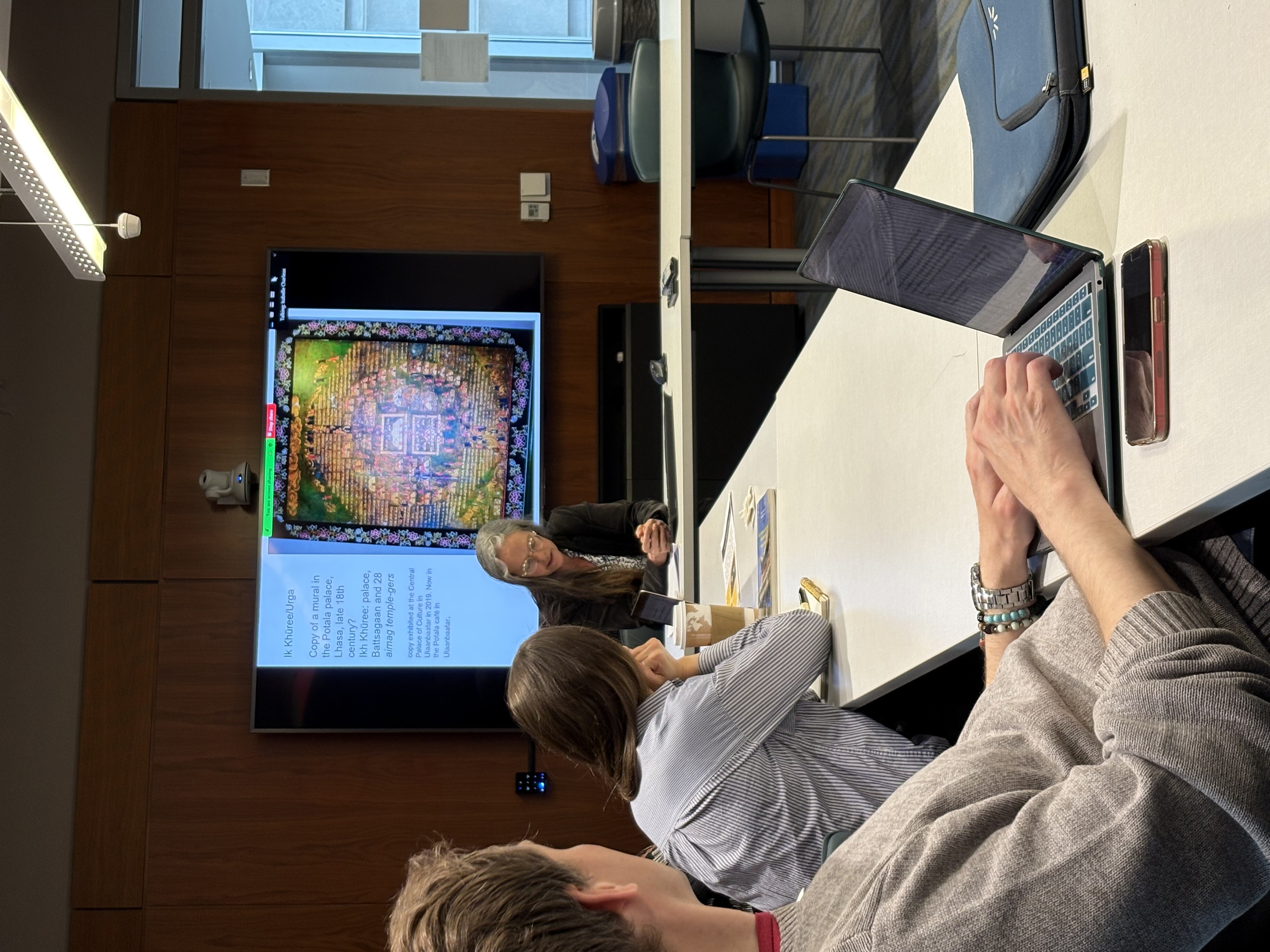On April 2nd the Inner Asian and Uralic National Resource Center was pleased to co-sponsor a guest lecture from renowned scholar Isabelle Charleux on the history of mobile monasteries in Mongolia. Isabelle Charleux is the Director of Research at the National Centre for Scientific Research in France. In her guest lecture, Dr. Charleux examined the history of mobility and Buddhism in the context of Mongolia. Dr. Charleux was driven by two primary questions in her research: What form of mobility do nomadic monasteries represent? Were mobile and stationary monasteries revered equally? She discussed how there has long been the perception that Buddhism and monasteries in particular are not compatible with mobility. However, Dr. Charleux pushed back against this viewpoint, noting that many early Buddhist monks in India were often quite mobile, and not attached to a particular site. Furthermore, there is a long history of mobile monasteries in Mongolia. These mobile monasteries, consisting of gers, became increasingly prevalent in the region after Buddhism was reintroduced to Mongolia in the 16th century. Dr. Charleux discussed how these mobile monasteries could move from place to place for a variety of reasons. Being mobile allowed a monastic community to move to a more remote area if they felt too close to growing population centers. Communities would also move to seek out better pastures or access to water. Sometimes monasteries would relocate according to geomancy in order to find a more appropriate location. Of course, monastic communities could also relocate when under political pressure from the authorities. Mobile monasteries were not constantly on the move, they often remained in the same area for years or even decades. However, Dr. Charleux noted that there were periods in Mongolian history in which monasteries relocated more frequently – particularly during the 17th and 18th centuries. Dr. Charleux also noted that neither mobile nor stationary monasteries were necessarily more revered. Unfortunately, many mobile monasteries were destroyed during the 1930s and 40s with the onset of the socialist period in Mongolia. Overall, Dr. Charleux’s discussion of mobile monasteries was incredibly informative and detailed.
Buddhism and Mobility: Nomadic Monasteries of Mongolia, 16th-19th Century
Wednesday, April 02, 2025




